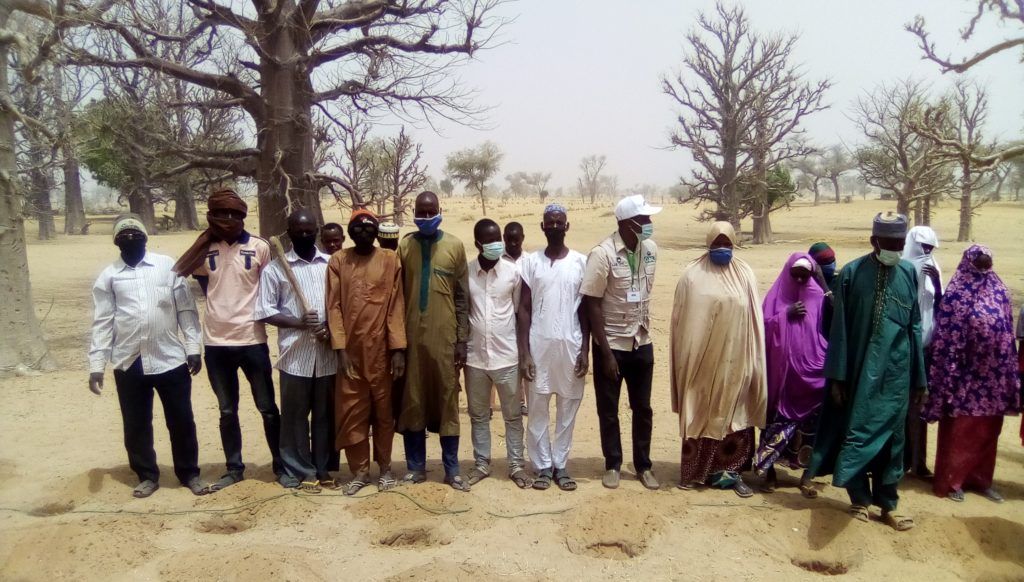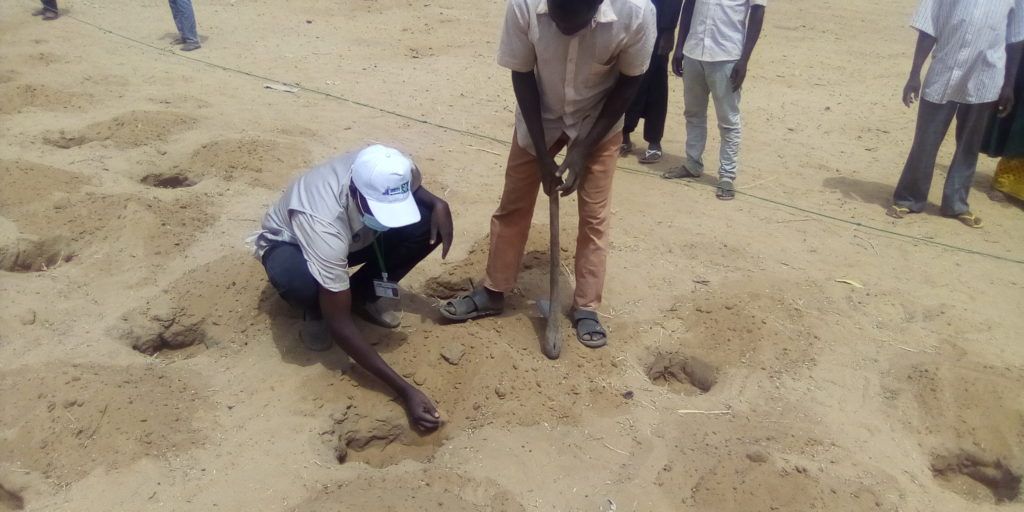 Blogs
Blogs
April 12, 2021 • 2 min read
Located in the Sahel region of North Africa, near the Sahara desert, Niger is a dry and mostly barren landscape.
Agriculture in Niger
With over 22 million people to feed, farmers and communities in the country face enormous challenges from drought and desertification.
GOAL is partnering with UNITLIFE, a United Nations initiative dedicated to fighting chronic malnutrition, to help communities in Niger find innovative ways to produce food despite the numerous obstacles that stand in their way.
One of these innovations is the “zai hole” technique. This is a traditional system where holes are dug manually to trap and concentrate water in one area. This helps with composting, and allows trees and plants to grow in previously dry and cracked soil.

Community in Dan Balou receiving training on the design and creation of Zai Holes
With temperatures in Niger regularly exceeding 40 celsius, the soil lacks enough water and nutrients to provide for large scale agriculture.
Zai Holes
The zai holes mean food production can be focused on a particular patch of fertile soil.
In Dan Balou, Niger, the GOAL team brought a number of villages together to train them how to create and maintain these zai holes.
Once dug, the holes are filed with compost, manure and other organic material. This creates a unique microenvironment. During the rainy season (May to October) the holes will fill with water and make the surrounding soils more fertile and resistant to drought.
Many of the participants are women. Villagers receiving training will maintain the holes and ensure their communities have enough food to see them through the drier months.
This is just one aspect of GOAL’s partnership with UNITLIFE, which aims to sustainably improve the nutrition of over 283,000 people, half whom are women and girls.
Through simple techniques like the zai hole, hundreds of villages across Niger will be able to have more sustainable and resilient agricultural practices.

Completed and filled Zai Holes.
